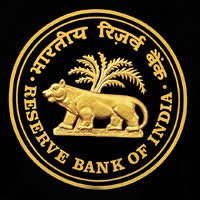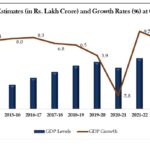India’s central bank on June 6, 2025, delivered a larger-than-expected monetary easing, cutting its key repo rate by 50 basis points and reducing the cash reserve ratio (CRR) by 100 basis points, as it navigates a fragile global economic landscape and seeks to bolster domestic growth.
The Reserve Bank of India (RBI) lowered the repo rate to 5.50 percent and the CRR to 3.00 percent, a move that analysts said was a surprise given expectations for a smaller 25 basis point rate cut. RBI Governor Sanjay Malhotra described the rate reduction as “frontloaded,” made possible by inflation aligning with the central bank’s target.
The RBI also shifted its monetary policy stance from “accommodative” to “neutral,” signaling “very limited” space for further easing after 100 basis points of cumulative cuts. The staggered CRR cut is expected to inject 2.5 trillion rupees ($29.95 billion) in liquidity into the banking system.
Global Headwinds and India’s Resilience
Malhotra highlighted a “fragile and highly fluid” global backdrop, noting that while uncertainty in the global economic outlook has somewhat ebbed since April, it remains high, dampening sentiment and global growth prospects. Multilateral agencies have consequently revised global growth and trade projections downwards.
The Governor pointed to a “protracted” final phase of disinflation globally, making the growth-inflation trade-off more challenging for monetary authorities. He also raised concerns about economic and financial fragmentation, complex interconnections within the financial system, elevated debt levels, and the increasing influence of frontier technologies on financial stability. Such factors, combined with volatile capital flows and exchange rates, pose significant challenges for emerging market central banks.
Despite these global headwinds, Malhotra asserted that the Indian economy exhibits “strength, stability, and opportunity,” underpinned by robust balance sheets across corporates, banks, households, government, and the external sector. He emphasized India’s “3Ds – demography, digitalization, and domestic demand,” as fundamental strengths to cushion against global spillovers and drive faster growth.
External Sector and Exchange Rate Dynamics
The RBI expects the current account deficit (CAD) for 2024-25 to remain low, supported by a moderated trade deficit in the fourth quarter and strong services exports and remittance receipts. India’s merchandise trade in April 2025 remained robust despite rising geopolitical uncertainties, though the trade deficit widened as imports grew faster than exports. Net services and remittance receipts are projected to remain in surplus, counterbalancing the trade deficit and ensuring the CAD for 2025-26 stays within sustainable levels.
On the financing side, foreign portfolio investment (FPI) into India sharply dropped to $1.7 billion in 2024-25, as investors booked profits in equities. Net foreign direct investment (FDI) also moderated, primarily due to increased repatriation and net outward FDI, even as gross FDI rose 14 percent. Malhotra noted that rising repatriation signals a mature market allowing smooth investor entry and exit, while strong gross FDI indicates India’s continued investment appeal. External commercial borrowings (ECBs) and non-resident deposits saw higher net inflows. As of May 30, 2025, India’s foreign exchange reserves stood at $691.5 billion, sufficient to cover over 11 months of goods imports and about 96 percent of external debt, affirming the RBI’s confidence in meeting external financing requirements.
However, Nomura, in a research note, indicated that the Indian Rupee (INR) is expected to underperform despite the RBI’s actions. While initial reactions saw a weaker INR, the shift to a neutral stance stabilized the spot USD/INR. Nomura anticipates continued downside growth challenges and further RBI rate cuts, providing limited macroeconomic support for the INR. The firm maintains a “long EUR/INR” position and expects the RBI to continue accumulating USD, citing a decrease in the RBI’s net short FX forward position and a rise in spot FX reserves in April.
Industry Welcomes Easing
Indian industry bodies largely welcomed the RBI’s measures. S.C. Ralhan, president of the Federation of Indian Export Organizations (FIEO), lauded the “bold monetary easing” as a “well-calibrated step to stimulate economic activity while keeping inflation expectations anchored.” He anticipates the measures will ease financing conditions, boost liquidity, and enhance credit flow, particularly for exports, manufacturing, and small and medium-sized enterprises (MSMEs).
Pankaj Chadha of EEPC India also welcomed the RBI’s “well-thought-out decisions,” stating that the repo rate cut would provide a “big impetus to growth and lift investor sentiment.” He acknowledged global uncertainties but highlighted positive growth in engineering goods exports. Chadha expressed confidence that the successive interest rate cuts would support the industry and drive further growth.
Note: ($1 = 85.75 Indian rupees)






